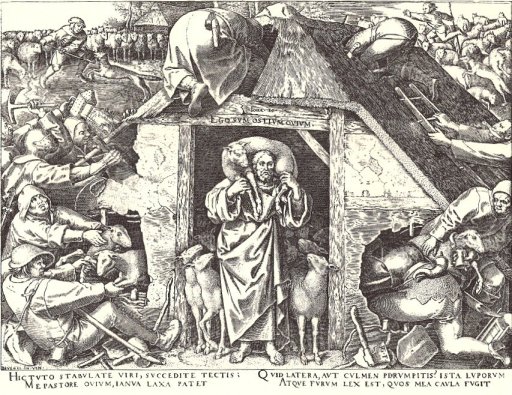|
The vanishing image |
|
I would like you to try something. Go to Google images and key in 'Good Shepherd', and see how long you can stand looking at all the cheesy sentimentality on view. I'm sure it won't take you long to see why it has taken so long to find a good representation of this subject from the last 1000 years or so. At last, here it is! |
|
|
|
|
| Here, Bruegel does us proud. I wonder if the shepherd figure is based on those images of Hermes? He would almost certainly have seen them when he visited Rome. Not only do we have the Good Shepherd, but, as a bonus, at the top right we have the Bad Shepherd as well, deserting his needy flock. So, apart from Bruegel, who was in any case illustrating the parable from Luke rather than presenting an image of Christ, what happened to the Good Shepherd? Has he moved into intensive farming instead, or given up entirely and got himself a job in I.T.? The last great work of art on this theme is the fifth century mosaic in the mausoleum of Galla Placida, and even then contemporary observers may have considered it a little dated. From the fifth century on, the image of Christ changed to be more in keeping with an established, dominant religion, rather than a persecuted one. First as Christ the all powerful, enthroned figure in glory, Christ Pantocrator, then as the crucified and resurrected saviour of mankind. Theology had moved on, and art moved on with it. After all, wasn't the link with the classical gods an uncomfortable reminder of a pagan past? . By the Renaissance and beyond shepherds were definitely out, as far as religious art was concerned. It's easy to see why: shepherds were now busy being amorous in Arcadia, not the right image at all. I'd venture to suggest that the caring, pastoral side of the church was now represented by a new character who, like Orpheus before him, was able to charm animals - St. Francis of Assisi.
|
|
|
|
|


